Here's a short synopsis of the trip to Belize. It was an education and an adventure. I really enjoyed my experience there with Michael and John. It is a place radically different from anywhere I've been before.
We started after meeting each other at the airport by staying at a place in Belize City. I quickly became acquainted with some of the more fundamental differences twixt here and there, namely sanitation, poverty, and general state of things. Everything looked built out of second-hand materials and appeared unfinished and in disrepair. Most cars appeared to be salvaged from the wrecking yard. The few places and things that were exceptions only added to the impression. *
Our room the first night, with its exposed wiring and jury-rigged plumbing, made me think that it was illegal there to follow anything that resembled building codes as we know them. For instance, the sewage system worked by gravity, of which there is none, as the city is pretty much all at sea level. The Caribbean merrily wended its way up the gutters at high tide in many places. Michael said that there was a portion of town that was built on a foundation of discarded rum bottles. That was easy to believe. Nevertheless, there was a sense of adventure and vague danger in the air. This was added to on the last day of our stay in a nearby place, the Aguada, which had signs nearby advising against swimming due to crocodiles in the canal. Indeed, one local individual not two blocks from there had thus met his demise a week before.
Our second day was mostly comprised of a bus journey that gave empirical credence to all the pictures and stories of third world bus travel. This was a nine-hour tour of exceptionally lush beauty, especially in the mountainous regions. It was a span of hours punctuated by stops in vaguely populated places wherefrom emerged locals dressed in well-used clothes, often appearing almost like single or grouped scarecrows with faces carved with the evidence of lack of everything but, in most cases, happiness. Periodically vendors of peanuts and cotton candy incongruously worked the aisles at the few rest stops we had in places that in no way resembled a bus terminal as we might know it. These were more like small warehouses whose contents were mysterious locals, occasional white backpackers, and rag tag yet bright groups of refugee looking folks with too many children and too heavy baggage.
At one crest of the road we were stopped by Belizian military sporting cocked semi-automatic rifles. They were checking for thieves returning to Guatemala with stolen cash, etc., I was told. I didn't mind the fellow who carefully inspected his way through the sea of faces towards the back where we were, and was pretty satisfied with his choice of interviewees, in fact. The one who concerned me was the very young and obviously raw recruit outside who scanned the bus ceaselessly with his eyes, his finger a hairs breadth away from the trigger of his weapon in the attitude of one willing, able, and desirous of shooting. The incident passed quickly and we were back on track to the ramshackle capital of Belmopan, our one-third way mark.
We passed in this way through jungle so thick a house cat couldn't penetrate it, I'm sure. There were more kinds of plants in any area than anywhere I'd ever seen, even in a nursery. Palms, more kinds than I could count, grew everywhere amongst even more numerous other trees, shrubs, plants, and grasses. It would make any botanist's head spin, I'm sure. Many of them were what we would consider here to be expensive house plants. Some of those were used as fences and hedges by villagers, most of whose homes were built on stilts with thatch or tin roofs. Indeed, it looked like an inconceivably large exotic plants nursery was randomly poured out over the landscape years ago and the precipitate took a stranglehold on the landscape.
There were open spaces, many of them slash and burn, or more established areas that are now hoary orchards, mostly of orange trees. Surely tankers of orange juice, their main product there, left daily to all parts of the world, and through one passage the scent of orange hung thick in the air, veiling even the smoke of the brush fires that seemed to be rampant throughout the country. One of these on the way back I thought would be the choking end of us, but Michael heroically got us through it.
After our unceremonious disembarkation at a location named "Dump," we stayed at a wonderful place run by Bruno, a tall and burly German fellow, and Mellisa, a diminutive local with a lilting laugh who nearly choked in merriment when I revealed that I've a bit of Transylvanian in my blood. Coincidence? I think "Bruno" means "bear" and "Mellisa" mean "honey." A wonderful if oddly paired couple. He has high certifications as a tour guide and is the Justice of the Peace in the area, and she, about half his size or less, runs the place in the practicalities of it, which in my case means she cooked a wonderful breakfast along with ultra fresh mangoes, papayas, watermelon, and, of course my addiction, coffee. We commuted daily from there to work on the Giles Estate and Plantation, a wondrous place in the midst of the living jungle, presided over in a loose way by a Mr. Tot in Michael's absence.
Mr. Tot is a character believable only by direct association. He hailed from Guatemala and speaks Kekchi, or lowland Mayan, as distinct from Yucatec. I won't try to go into many details about him and his family, though we learned much about and from him. He had a rough life by any standards, and is illiterate except in the lore of surviving in the jungle by wits and strength, aided only by rubber boots, a razor like machete, and a 16 gauge shotgun. Here is a man to whom, necessarily, mind you, the preservation of endangered species means nothing, as they are his food amongst the meager offerings of the jungle and his own patch of corn and cows down the road. He killed, during the tenure of our visit, a fer de lance, a gibnut, and a jaguar. He showed us how to open a tree fresh coconut, from the right end, and drink its heavenly sweet milk. We tasted various species of cacao goo fresh from pods growing there in abundance on many trees. He helped me dig a latrine 3x4x3 in the root bound soil behind the cabin there. Astounding stories fell from his lips as easily as breath, about his life and times, with high pitched prolonged "whooooooooooooooo!"s sprinkled liberally for emphasis.
He was a character, heading up his family of seven children and a wife all of whom lived nearby the front entrance in shacks with no water or electricity. These structures were comprised of corrugated metal wired to posts for walls and thatch for a roof, and no windows. I wondered how they fared, considering that in the Giles' manse we killed upwards of 20 four inch scorpions in two days of cleaning. Despite their devilishly menacing aspect, these would only cause an hour of intense pain which would taper off in a few hours. In the end I was much more concerned about the snakes (one would far rather meet a large rattle snake than the dreaded fer-de-lance) and ticks.
We also killed thousands of scrambling termites that exploded from a nest on the house's edge. The nest was about the size of two basket balls. Many applications of Dursban (c) later, along with major surgery on the part holding the nest, it seemed that we had at least for the moment, won against the termites. We shall see. Many parts of the structure had to be replaced with new wood. We found that batteries for the portable tools that Michael had schlepped from home were the biggest bugaboo. They were too soon defeated by the incredible hardness of even the local pine. Teak and mahogany are common structural elements there, but all the wood seems to be dense. There is one species called "Cortes" I believe, that Bruno told me you could soak with kerosene and still not get it to burn.
We also erected a platform about eight feet high for a cistern, and Michael plumbed it to an existing gutter and one that John installed. Supplies were imported to the site by Michael, who on one of his forays was stopped by the local police. They scolded him for not wearing a seat belt, but despite seeing it, ignored the open and half consumed bottle of beer in his lap. We together did a lot of cleaning of the insides of the place, even to taking out some useless structures and bookshelves that could hide scorpions above eye level. These cleanings were peppered with the occasional frenzy that accompanied the discovery of yet another black scorpion scuttling for cover, I'm sure, but to us they always seemed bent on attacking any bare piece of flesh. I for one was glad for the heavy rubber boots I'd originally bought in Canada, and I was grateful for any implement at hand that could dispatch these creatures that were much larger in my imagination than in actual size.
It was clear in short order why one doesn't go anywhere in the jungle without a machete, a knife, and water. And always with wits about. I don't think my eyes ever stopped moving when we were in the thickets, such scans necessarily including everything from the ground to the sky and all sides, and in as great detail as possible. Few people get such a valuable lesson in awareness, save a local who lives there, or a point man of a military patrol. Compared to those, mine was only a mild taste of what it takes, far from even a good dose.
There are Mayan ruins on the land there, and a stele. Over our time there we visited three sites that were Mayan ruins, and each had its particular feel and presence. We went to Lubaatun, Uxbenka, and Altun Ha. Those can be Googled for complete sets of photos. My favorite was Uxbenka, though it was the least excavated and restored. Here we went for a jaunt through the jungle on an ill marked trail that had been surely supplanted for the important part by an improvised corn field and nearly lost our way. Before that I sat for a while at the ruin's highest point and heard...nothing. Nothing but the wind caressing the lushness of jungle around it. Not a car, not a voice, not a bus or plane, nor the usual civilized hum of electricity and the cumulative noise of humanity. Nothing but the wind and my heart. What a rare experience for someone like me living usually in "civilization." How precious. How foundational.
So I learned and experienced much. Michael treated us to his wonderful cooking many times, and I made a comparatively comical effort one evening with some fish he obtained at a local market, where the Garifuna culture is found, along with their unique music. But we lived through even my attempt at food prep. I left the country after a long drive with Michael back to Belize City by way of Orange Walk and the semi-paved old North highway. Michael had to deal with a flat tire on the morning I left, so it ended up that the son of the innkeeper at Aguada got me to the airport in good time. Michael saw me board the plane, but not thinking he would be there by then I didn't look up to the observation deck and missed him, as well as Frances, his wife, who arrived later that day. We had seen John off the day before.
Now I am home, by way of Sedona, which was a wonderful experience for both me and a friend, who was welcomed by all there, and was included in the activities. We had the great fun of being the only members of the group who camped out as distinct from staying at the lodge. We enjoyed the several humorous moments that sprang from our far-too-formal for camping duds as we prepared to leave for the morning session from our location at Dead Horse Ranch, 17 miles south of Sedona. But you know what? I wouldn't trade for the experience of experiencing the event that way. We had a completely lovely time there and at the activities surrounding the seminars. Now I'm happy to be back home after visiting Tucson very briefly to re-connect with a friend and I'm happy to be sharing these moments with family and friends.
Two Youtube clips that show some of Belize City
http://www.youtube.com/watch?v=Eg6SQKqXAv4
http://www.youtube.com/watch?v=aIkt4TzUHRY&feature=related
Monday, April 26, 2010
Subscribe to:
Post Comments (Atom)

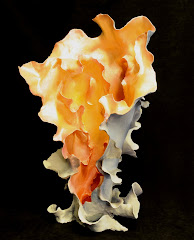
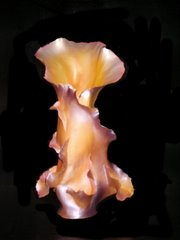

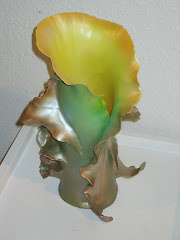



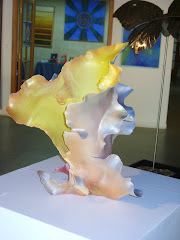

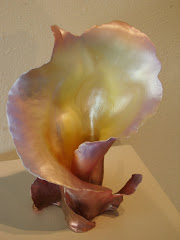


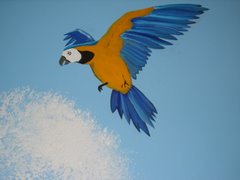

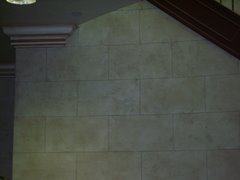
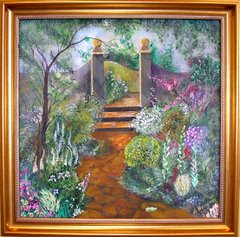
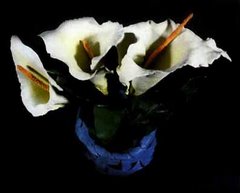
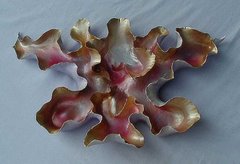


No comments:
Post a Comment